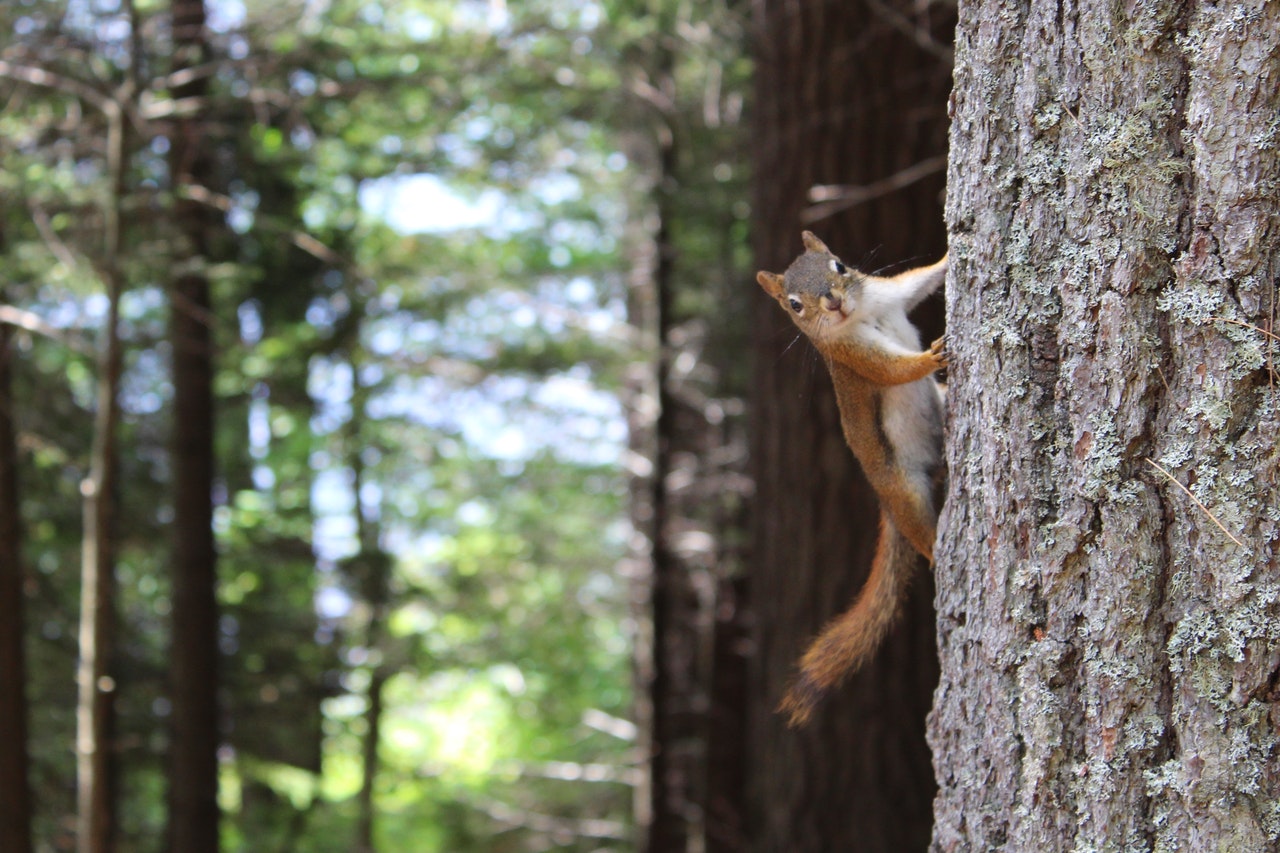Spending time in the great outdoors can expose you to all kinds of wild animals. However, will hammock camping protect you from the dangers of animals in the area?
Choose a well-known campsite away from animal activity, and hang your hammock a little higher than the standard 18 inches to stay safe from animals. In addition, eliminating odors from food and toiletries will also help keep animals away from your hammock.

There are other things you can do to reduce the likelihood of animals getting too close to your hammock. Read on below to learn more.
Table of Contents
Will Animals Bother You in a Hammock?
Hammock camping is all about relaxing in the great outdoors, enjoying the scenery as well as the tranquility.
Unfortunately, some of the most beautiful destinations for hammock camping are also thriving with wildlife that may be bothersome for campers. Sometimes small animals can be nothing more than a nuisance, but in other occasions they can be dangerous, such as with bears. Either way, most hammock campers simply want to be safe from animals.
Choose a Safe Location for Your Hammock
While there’s no assurance that your hammock will keep you safe from animals, the first and most important step to take is to do your homework on the location you’ll be hammock camping in.
As a rule of thumb, avoid hammock camping in places that have signs of animals. Keep an eye out for footprints, claw marks on trunks of trees, and trampled bush. Many predatory animals are also attracted to bodies of water since they may drink from it or look for food, so stay 200 feet away or more from ponds or lakes.
A safe location, such as a popular campsite with lots of traffic, is always a good bet. On the other hand, hanging your hammock on isolated areas, rocky cliffs, unauthorized land, or in spots that are off the beaten track will increase the chances that animals may bother you while you’re in your hammock. It’s also ideal to research local animal warnings to see which spots are prone to raccoons, bears, and other wildlife in the area.
Hang Your Hammock at a Good Height
Generally speaking, hammocks should always be hung 18 inches off the ground. For added protection from smaller animals like coyotes and raccoons, you can try hanging it 2 inches higher or more, as long as it lets you sit down and escape easily.
However, don’t hang your hammock too high that escaping would be difficult if larger animals, such as bears, get too close.
Other Ways To Keep Your Hammock Safe From Animals
Aside from choosing the right location and hanging your hammock at an ideal height, here are other ways that you can reduce the chances of animals getting too close to your hammock:
- Don’t keep any food in your hammock with you. This rule applies even in areas where there are no dangerous animals because it can still mean waking up to several squirrels trying to get into your food. All food should be kept at least 100 feet away from your hammock.
- Don’t sleep in your hammock wearing the same clothes you cooked in. The smell of food can cling to fabric even hours after you’ve cooked, and this is an effective way of attracting animals. Instead, keep the clothes you wore cooking in an airtight container at least a hundred feet away from your hammock.
- Get rid of odors as much as possible. It isn’t just food that can attract animals but also the smell from bug sprays, lotions, and toiletries. Keep them inside an air-tight container or inside a hard-top vehicle if you’re bringing one.
With these tips, you can increase the chances of staying safe from animals while hammock camping.
Is Hammock Camping Safe From Bears?
Bears are attracted to campsites because they are attracted to the smell of food. If you are hammock camping, it is important to make sure that all of your food and garbage is properly stored away so that bears cannot smell it. You should also never cook near or eat in your hammock.
In addition, you should avoid using scented products such as perfume or deodorant while you are hammock camping. Bears have a keen sense of smell and they can be attracted to the scent of these products.
If you are properly prepared, hammock camping can be a safe and enjoyable experience. By taking some simple precautions, you can ensure that you and your campsite are safe from bears.
Can Snakes Get in a Hammock?
Yes, snakes can get in a hammock. Hammocks provide an elevated resting place for snakes and other animals. Snakes may enter a hammock in search of food or shelter, or to escape predators.
Some snakes, such as the boa constrictor, are good climbers and can easily scale the fabric of a hammock. Other snakes, such as the garter snake, are not as good climbers and may have difficulty getting into a hammock.
Once a snake is in a hammock, it may be difficult for it to get out. This can be a problem if the snake is unable to find food or water, or if the temperature in the hammock is too hot or too cold.
If you find a snake in your hammock, it is best to remove it gently with a long stick or pole. Do not try to kill the snake, as this may be illegal in your area.
Conclusion
Hammock camping doesn’t have to mean you’ll be encountering wildlife. By following these tips, you can keep your hammock safe from curious animals.
